Sat Mag
Linkages and breakages: Marxist historiography in Sri Lanka
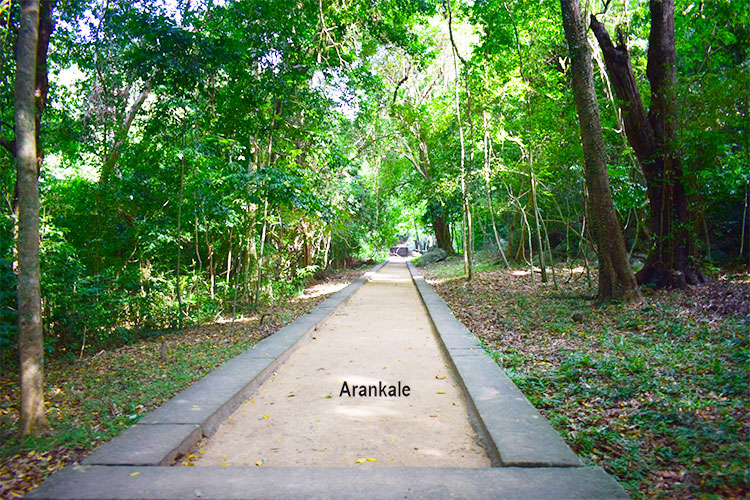
By Uditha Devapriya
Halfway through Senake Bandaranayake’s Continuities and Transformations: Studies in Sri Lankan Archaeology and History, I stopped to wonder why we no longer produce exceptional sociologists, anthropologists, archaeologists, and historians. Bandaranayake gives us the most cohesive critique of Ananda Coomaraswamy’s theories on art and culture, a critique that Regi Siriwardena revisited in a later essay. His explorations into pre-modern urban settlements and architecture in Sri Lanka and his attempts at periodising local history, the latter an endeavour that occupied R. A. L. H. Gunawardana, are free of the kind of rigidity which so despairingly characterises, if not defines, scholarship in the country today.
The point that Dr Bandaranayake raises isn’t so much that we had an advanced civilisation – a point nationalists would be quick to assert – as that this advanced civilisation wasn’t just the work of kings: there were significant conjunctures between kings and monks, ruler and ruled, nobility and peasantry, that produced the feats of architecture for which Sri Lanka has gained a reputation today. This is not the great man thesis most historians before Bandaranayake had accepted and propounded: that kings were at the top of the social hierarchy, and that they had the final say on both secular and religious matters, including urban planning.
These concerns had occupied Dr Bandaranayake ever since his monograph, Monastic Sinhalese Architecture, appeared in 1974; it lead from a rigorous critique of the empiricist tradition which dominated intellectual life at the University of Peradeniya in the early 1960s. Laying an emphasis on cultural as opposed to material factors, this tradition stressed the role of hierarchies rather than social formations in pre-colonial Sri Lanka. Those who challenged it invariably hailed from the Marxist tradition and read Marxist historiography; they included Bandaranayake, and most prominently R. A. L. H. Gunawardana.
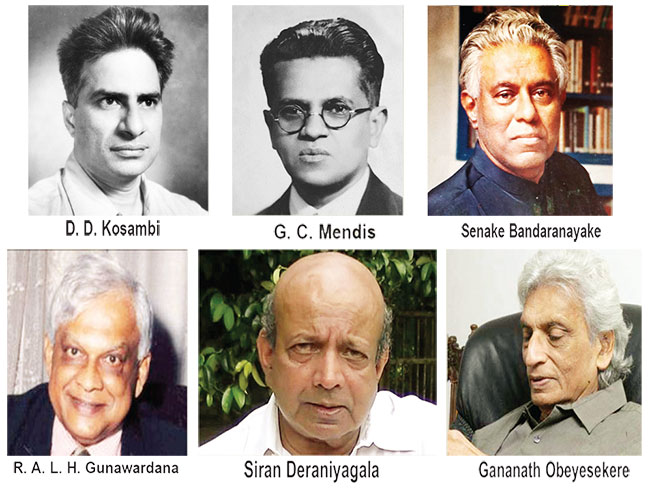 In India, the shift from empiricism to Marxist historiography transpired more quickly, partly because historians there were more receptive to radical ideas. D. D. Kosambi, R. S. Sharma, and Romila Thapar imbibed these ideas; as A. L. Balsham’s protégé, Thapar readily took up Kosambi’s and Sharma’s mantle. The result was a flourishing interest in Indian history which has never been equalled in any other country in South Asia, including Sri Lanka.
In India, the shift from empiricism to Marxist historiography transpired more quickly, partly because historians there were more receptive to radical ideas. D. D. Kosambi, R. S. Sharma, and Romila Thapar imbibed these ideas; as A. L. Balsham’s protégé, Thapar readily took up Kosambi’s and Sharma’s mantle. The result was a flourishing interest in Indian history which has never been equalled in any other country in South Asia, including Sri Lanka.
In Sri Lanka, these debates did not open up until after 1956. This is not a coincidence. 1956 liberated scholars, including archaeologists, from their empiricist moorings, and encouraged them to question accepted norms, demolish established standards, and set new ones. Having emerged from what one might tongue-in-cheek call the H. W. Codrington and G. C. Mendis School of History, they began exploring new areas of research which had been shut to them. Probably the most interesting and intriguing area among them was the link between the rise of the state in Sri Lanka and the evolution of a Sinhala nationalist consciousness.
With his forays into the evolution of Sinhala literature, Martin Wickramasinghe had outlined something of a historiography of medieval Sinhala society, beginning in the 8th century and breaking off somewhere in the 15th. Wickramasinghe’s core argument in Sinhala Sahithyaye Negeema was that the degree to which Sinhala had been allowed to be influenced by Sanskrit determined the course of history from the Polonnaruwa to the Kotte kingdom. In other words, these periods were marked by both continuities and transformations.
This argument would be developed and expanded by R. A. L. H. Gunawardana in his essay, “The People of the Lion” (1979), which asserted that not before the 10th century do we see the inklings of a national consciousness, and that Sinhala nationalism was fermented under conditions of colonialism, specifically British colonialism; “[i]t was,” he notes, “during the period of colonial rule that the Sinhala consciousness underwent a radical transformation and began to assume its current form.” As Senake Bandaranayake notes in his brilliant essay on Ananda Coomaraswamy, colonialism produced a disjuncture between opposition to political nationalism and embracement of cultural nationalism: hence, even as officials valorised an idealised and imagined conception of Sinhala culture, these same officials cracked down on anti-colonial struggles while “denying or neglecting the more recent or extant vitality of” the bearers of that culture. Bandaranayake’s argument that Coomaraswamy’s writings reflected these notions of tradition is certainly debatable, yet his central premise is not.
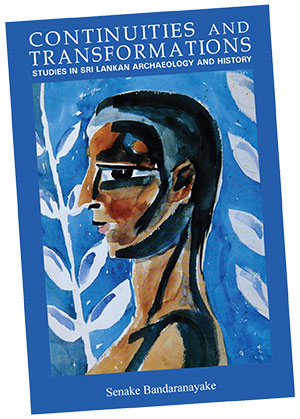 Martin Wickramasinghe may have charted a new scheme for periodisation, but it was the Marxist historians who eventually took forward his thinking. Influenced by the writings of H. W. Codrington, G. C. Mendis, Senarat Paranavitana, and Lakshman Perera, they proposed new trajectories, occupying themselves less with dynastic shifts than with material factors such as social relations and exchange networks. Starting with Amarasiri Liyanamage’s and R. A. L. H. Gunawardana’s Anuradhapura Yugaya (1961), their scholarly interventions soon helped to nurture and ferment intellectual debates at Peradeniya, facilitating a shift from an empiricist to a materialist approach to history. Gunawardana’s “The People of the Lion” is, certainly, a major contribution to these debates, yet no less important is his Robe and Plough (1979), which presented Buddhism not as a cultural artefact legitimated by the work of kings, but as an institution dependent on, and embedded in, the state and the economy.What defined these intellectual currents? First and foremost, there was a decisive shift from the dynasty centrism of previous scholars. Local history until then had been seen as a series of successive periods determined by the presence of certain cultural motifs. Viewed this way, certain periods were demarcated as superior to others, while certain periods were dismissed as decadent or exhibiting symptoms of civilisational decline. Yet, as Senake Bandaranayake points out in Continuities and Transformations, these declines really amounted to changes in such rudiments of civilisation as building material and religious consciousness; hence, while the moonstone in the Anuradhapura and Polonnaruwa kingdoms is hailed as superior to its successors, this is not at all to deny the “continuous momentum of development” that would characterise its prototypes in the Gampola, Kotte, and Kandy periods.
Martin Wickramasinghe may have charted a new scheme for periodisation, but it was the Marxist historians who eventually took forward his thinking. Influenced by the writings of H. W. Codrington, G. C. Mendis, Senarat Paranavitana, and Lakshman Perera, they proposed new trajectories, occupying themselves less with dynastic shifts than with material factors such as social relations and exchange networks. Starting with Amarasiri Liyanamage’s and R. A. L. H. Gunawardana’s Anuradhapura Yugaya (1961), their scholarly interventions soon helped to nurture and ferment intellectual debates at Peradeniya, facilitating a shift from an empiricist to a materialist approach to history. Gunawardana’s “The People of the Lion” is, certainly, a major contribution to these debates, yet no less important is his Robe and Plough (1979), which presented Buddhism not as a cultural artefact legitimated by the work of kings, but as an institution dependent on, and embedded in, the state and the economy.What defined these intellectual currents? First and foremost, there was a decisive shift from the dynasty centrism of previous scholars. Local history until then had been seen as a series of successive periods determined by the presence of certain cultural motifs. Viewed this way, certain periods were demarcated as superior to others, while certain periods were dismissed as decadent or exhibiting symptoms of civilisational decline. Yet, as Senake Bandaranayake points out in Continuities and Transformations, these declines really amounted to changes in such rudiments of civilisation as building material and religious consciousness; hence, while the moonstone in the Anuradhapura and Polonnaruwa kingdoms is hailed as superior to its successors, this is not at all to deny the “continuous momentum of development” that would characterise its prototypes in the Gampola, Kotte, and Kandy periods.
At the same time, historians and scholars tended to consider the cultural achievements of a particular era, most prominently Anuradhapura, as proof of its unbroken continuity. From what archaeological evidence has been gathered, however, Bandaranayake contends that not even the feats of architecture and engineering at Anuradhapura can be taken as proof of such continuity; as he points out, correctly, “[t]he familiar monuments at Anuradhapura… belong mostly to the period of the 8th to the 10th century.” Whether or not there were other epochs within such all encompassing eras is, of course, a matter of conjecture: what Bandaranayake calls the “Anuradhapura stratification thesis” can be neither verified nor denied unless further excavations are conducted at these sites. Yet the conclusion he derives from these arguments is irrefutable: that history is not one long arrow, but rather a series of arrows, more often than not shot from different bows and by different archers.
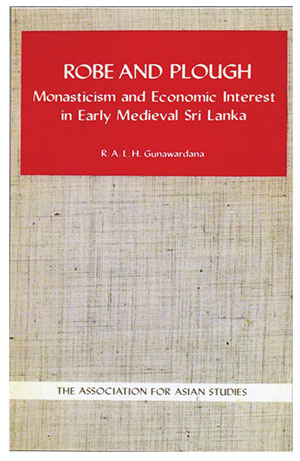 The implications of these debates and interventions cannot be denied. For, without belittling the timeliness of such interventions, they were fraught with various problems. Gunawardana points at two main limitations when trying to “periodise history”: that it depends on certain factors that influence the passing of time and the historian’s perceptions of these factors, and that the “flow of time” in spheres of activity such as economics and culture makes it difficult to demarcate one period on the basis of one set of factors to the exclusion of all others: to cite just one example, the role of monasteries. Following Ranke and Hegel, as Gunawardana aptly asserts, it is hence difficult to reduce history to a series of “zeitgeists.”
The implications of these debates and interventions cannot be denied. For, without belittling the timeliness of such interventions, they were fraught with various problems. Gunawardana points at two main limitations when trying to “periodise history”: that it depends on certain factors that influence the passing of time and the historian’s perceptions of these factors, and that the “flow of time” in spheres of activity such as economics and culture makes it difficult to demarcate one period on the basis of one set of factors to the exclusion of all others: to cite just one example, the role of monasteries. Following Ranke and Hegel, as Gunawardana aptly asserts, it is hence difficult to reduce history to a series of “zeitgeists.”
Deceptively similar as the periodisation schemes of these historians would have been, there were nevertheless important differences between their approaches to the question of “cutting up time.” Thus, while Bandaranayake’s classification of Lankan history divides it into early, middle, and late periods, encompassing both regional kingdoms and unitary polities, Leslie Gunawardana classifies them on the basis of chiefdoms, kingdoms, and colonial settlements, the latter of which he divides into periods of resistance and periods of subjugation, followed, logically, by the postcolonial era. Complicating these distinctions further was, and is, the lack of research into the country’s prehistory: with the exception of Siran Deraniyagala (1992) and Raj Somadeva (2006), hardly anyone has delved into this field properly.
To be sure, the significance of these ventures must be appreciated for the contribution they made to the study of local history. As Bandaranayake contends in his essay on the subject, once you assess history on the basis of materialist factors, you can adopt several criteria to distinguish one period from another. In other words, periodisation can be made on the basis of not just social relations or formations, but commercial networks, exchange systems, and cultural artefacts as well. Grounded in material factors, one set of criteria invariably overlaps with another: thus Bandaranayake’s early-middle-late timeline coincides with Martin Kuna’s “culture period timeline”, even though both scholars adopt different criteria. If one accounts for different factors, such as technology, one comes across overlaps with timelines based on other criteria, even if the dating of the periods in those timelines may differ.
Whatever the debates and disagreements these studies have led to, we must be thankful to the Marxists for having pioneered a historiography that steered clear of the dynasty centrism and empiricism of their predecessors. It essentially rescues a civilisation and a society from stasis and, as Bandaranayake notes, presents history “as a continuing and developing process rather than a series of static epochs.” That these approaches to history have not properly seeped into our textbooks is an unflattering testament to the lowering of standards and the predominance of the great man thesis which undergirds a dynastic approach to the subject.
Ideologically, the latter theory has penetrated all levels of intellectual activity in the country, which is why it’s hard to let go. Yet no study of a society will be complete without cohesive, comprehensive archaeological and historical research. Such research invariably needs literate scholars capable of not just applying theories conceived elsewhere, but also questioning such theories when the local context provides suitable grounds for departing from them.
Sri Lanka has so far seen Gananath Obeyesekere, Ralph Pieris, Leslie Gunawardana, Newton Gunasinghe, Kumari Jayawardena, Senake Bandaranayake, Michael Roberts, K. M. de Silva, S. B. D. de Silva, Siran Deraniyagala, SinhaRaja Tammita-Delgoda, Nira Wickramasinghe, and Sarath Amunugama, the latter the best anthropologist we have, after Obeyesekere. It is depressing to think there’s no one to take up their mantle. Having finished Bandaranayake’s book, I hence stopped to ask myself again: just where are our sociologists, anthropologists, archaeologists, and historians? Just where are our thinkers?
The writer can be reached at udakdev1@gmail.com
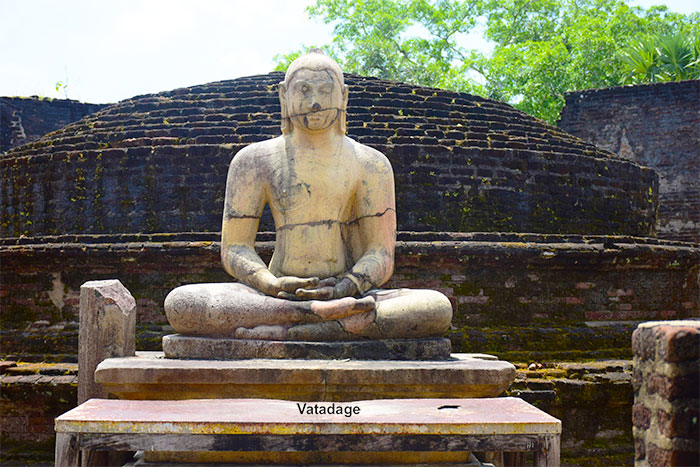
Sat Mag
October 13 at the Women’s T20 World Cup: Injury concerns for Australia ahead of blockbuster game vs India
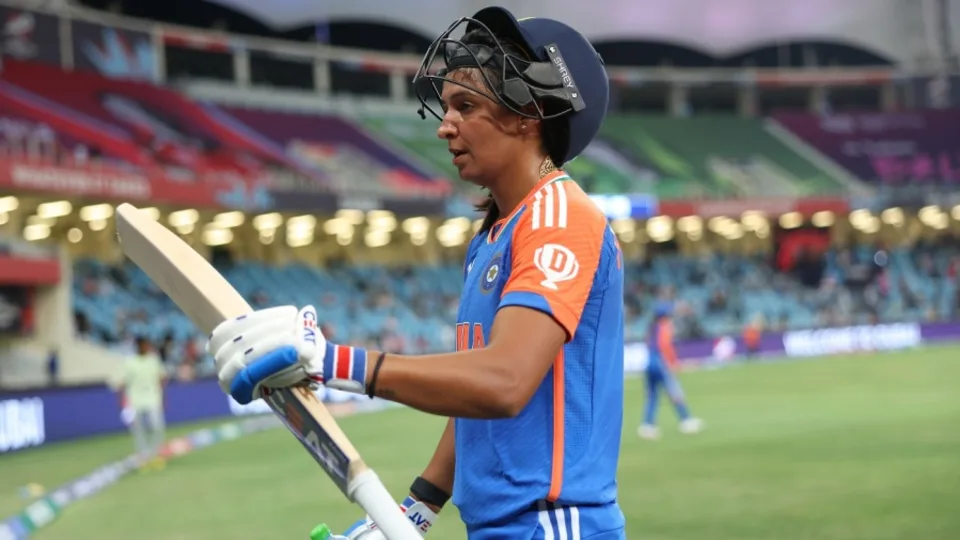
Australia vs India
Sharjah, 6pm local time
Australia have major injury concerns heading into the crucial clash. Just four balls into the match against Pakistan, Tayla Vlaeminck was out with a right shoulder dislocation. To make things worse, captain Alyssa Healy suffered an acute right foot injury while batting on 37 as she hobbled off the field with Australia needing 14 runs to win. Both players went for scans on Saturday.
India captain Harmanpreet Kaur who had hurt her neck in the match against Pakistan, turned up with a pain-relief patch on the right side of her neck during the Sri Lanka match. She also didn’t take the field during the chase. Fast bowler Pooja Vastrakar bowled full-tilt before the Sri Lanka game but didn’t play.
India will want a big win against Australia. If they win by more than 61 runs, they will move ahead of Australia, thereby automatically qualifying for the semi-final. In a case where India win by fewer than 60 runs, they will hope New Zealand win by a very small margin against Pakistan on Monday. For instance, if India make 150 against Australia and win by exactly 10 runs, New Zealand need to beat Pakistan by 28 runs defending 150 to go ahead of India’s NRR. If India lose to Australia by more than 17 runs while chasing a target of 151, then New Zealand’s NRR will be ahead of India, even if Pakistan beat New Zealand by just 1 run while defending 150.
Overall, India have won just eight out of 34 T20Is they’ve played against Australia. Two of those wins came in the group-stage games of previous T20 World Cups, in 2018 and 2020.
Australia squad:
Alyssa Healy (capt & wk), Darcie Brown, Ashleigh Gardner, Kim Garth, Grace Harris, Alana King, Phoebe Litchfield, Tahlia McGrath, Sophie Molineux, Beth Mooney, Ellyse Perry, Megan Schutt, Annabel Sutherland, Tayla Vlaeminck, Georgia Wareham
India squad:
Harmanpreet Kaur (capt), Smriti Mandhana (vice-capt), Yastika Bhatia (wk), Shafali Verma, Deepti Sharma, Jemimah Rodrigues, Richa Ghosh (wk), Pooja Vastrakar, Arundhati Reddy, Renuka Singh, D Hemalatha, Asha Sobhana, Radha Yadav, Shreyanka Patil, S Sajana
Tournament form guide:
Australia have three wins in three matches and are coming into this contest having comprehensively beaten Pakistan. With that win, they also all but sealed a semi-final spot thanks to their net run rate of 2.786. India have two wins in three games. In their previous match, they posted the highest total of the tournament so far – 172 for 3 and in return bundled Sri Lanka out for 90 to post their biggest win by runs at the T20 World Cup.
Players to watch:
Two of their best batters finding their form bodes well for India heading into the big game. Harmanpreet and Mandhana’s collaborative effort against Pakistan boosted India’s NRR with the semi-final race heating up. Mandhana, after a cautious start to her innings, changed gears and took on Sri Lanka’s spinners to make 50 off 38 balls. Harmanpreet, continuing from where she’d left against Pakistan, played a classic, hitting eight fours and a six on her way to a 27-ball 52. It was just what India needed to reinvigorate their T20 World Cup campaign.
[Cricinfo]
Sat Mag
Living building challenge

By Eng. Thushara Dissanayake
The primitive man lived in caves to get shelter from the weather. With the progression of human civilization, people wanted more sophisticated buildings to fulfill many other needs and were able to accomplish them with the help of advanced technologies. Security, privacy, storage, and living with comfort are the common requirements people expect today from residential buildings. In addition, different types of buildings are designed and constructed as public, commercial, industrial, and even cultural or religious with many advanced features and facilities to suit different requirements.
We are facing many environmental challenges today. The most severe of those is global warming which results in many negative impacts, like floods, droughts, strong winds, heatwaves, and sea level rise due to the melting of glaciers. We are experiencing many of those in addition to some local issues like environmental pollution. According to estimates buildings account for nearly 40% of all greenhouse gas emissions. In light of these issues, we have two options; we change or wait till the change comes to us. Waiting till the change come to us means that we do not care about our environment and as a result we would have to face disastrous consequences. Then how can we change in terms of building construction?
Before the green concept and green building practices come into play majority of buildings in Sri Lanka were designed and constructed just focusing on their intended functional requirements. Hence, it was much likely that the whole process of design, construction, and operation could have gone against nature unless done following specific regulations that would minimize negative environmental effects.
We can no longer proceed with the way we design our buildings which consumes a huge amount of material and non-renewable energy. We are very concerned about the food we eat and the things we consume. But we are not worrying about what is a building made of. If buildings are to become a part of our environment we have to design, build and operate them based on the same principles that govern the natural world. Eventually, it is not about the existence of the buildings, it is about us. In other words, our buildings should be a part of our natural environment.
The living building challenge is a remarkable design philosophy developed by American architect Jason F. McLennan the founder of the International Living Future Institute (ILFI). The International Living Future Institute is an environmental NGO committed to catalyzing the transformation toward communities that are socially just, culturally rich, and ecologically restorative. Accordingly, a living building must meet seven strict requirements, rather certifications, which are called the seven “petals” of the living building. They are Place, Water, Energy, Equity, Materials, Beauty, and Health & Happiness. Presently there are about 390 projects around the world that are being implemented according to Living Building certification guidelines. Let us see what these seven petals are.
Place
This is mainly about using the location wisely. Ample space is allocated to grow food. The location is easily accessible for pedestrians and those who use bicycles. The building maintains a healthy relationship with nature. The objective is to move away from commercial developments to eco-friendly developments where people can interact with nature.
Water
It is recommended to use potable water wisely, and manage stormwater and drainage. Hence, all the water needs are captured from precipitation or within the same system, where grey and black waters are purified on-site and reused.
Energy
Living buildings are energy efficient and produce renewable energy. They operate in a pollution-free manner without carbon emissions. They rely only on solar energy or any other renewable energy and hence there will be no energy bills.
Equity
What if a building can adhere to social values like equity and inclusiveness benefiting a wider community? Yes indeed, living buildings serve that end as well. The property blocks neither fresh air nor sunlight to other adjacent properties. In addition, the building does not block any natural water path and emits nothing harmful to its neighbors. On the human scale, the equity petal recognizes that developments should foster an equitable community regardless of an individual’s background, age, class, race, gender, or sexual orientation.
Materials
Materials are used without harming their sustainability. They are non-toxic and waste is minimized during the construction process. The hazardous materials traditionally used in building components like asbestos, PVC, cadmium, lead, mercury, and many others are avoided. In general, the living buildings will not consist of materials that could negatively impact human or ecological health.
Beauty
Our physical environments are not that friendly to us and sometimes seem to be inhumane. In contrast, a living building is biophilic (inspired by nature) with aesthetical designs that beautify the surrounding neighborhood. The beauty of nature is used to motivate people to protect and care for our environment by connecting people and nature.
Health & Happiness
The building has a good indoor and outdoor connection. It promotes the occupants’ physical and psychological health while causing no harm to the health issues of its neighbors. It consists of inviting stairways and is equipped with operable windows that provide ample natural daylight and ventilation. Indoor air quality is maintained at a satisfactory level and kitchen, bathrooms, and janitorial areas are provided with exhaust systems. Further, mechanisms placed in entrances prevent any materials carried inside from shoes.
The Bullitt Center building
Bullitt Center located in the middle of Seattle in the USA, is renowned as the world’s greenest commercial building and the first office building to earn Living Building certification. It is a six-story building with an area of 50,000 square feet. The area existed as a forest before the city was built. Hence, the Bullitt Center building has been designed to mimic the functions of a forest.
The energy needs of the building are purely powered by the solar system on the rooftop. Even though Seattle is relatively a cloudy city the Bullitt Center has been able to produce more energy than it needed becoming one of the “net positive” solar energy buildings in the world. The important point is that if a building is energy efficient only the area of the roof is sufficient to generate solar power to meet its energy requirement.
It is equipped with an automated window system that is able to control the inside temperature according to external weather conditions. In addition, a geothermal heat exchange system is available as the source of heating and cooling for the building. Heat pumps convey heat stored in the ground to warm the building in the winter. Similarly, heat from the building is conveyed into the ground during the summer.
The potable water needs of the building are achieved by treating rainwater. The grey water produced from the building is treated and re-used to feed rooftop gardens on the third floor. The black water doesn’t need a sewer connection as it is treated to a desirable level and sent to a nearby wetland while human biosolid is diverted to a composting system. Further, nearly two third of the rainwater collected from the roof is fed into the groundwater and the process resembles the hydrologic function of a forest.
It is encouraging to see that most of our large-scale buildings are designed and constructed incorporating green building concepts, which are mainly based on environmental sustainability. The living building challenge can be considered an extension of the green building concept. Amanda Sturgeon, the former CEO of the ILFI, has this to say in this regard. “Before we start a project trying to cram in every sustainable solution, why not take a step outside and just ask the question; what would nature do”?
Sat Mag
Something of a revolution: The LSSP’s “Great Betrayal” in retrospect
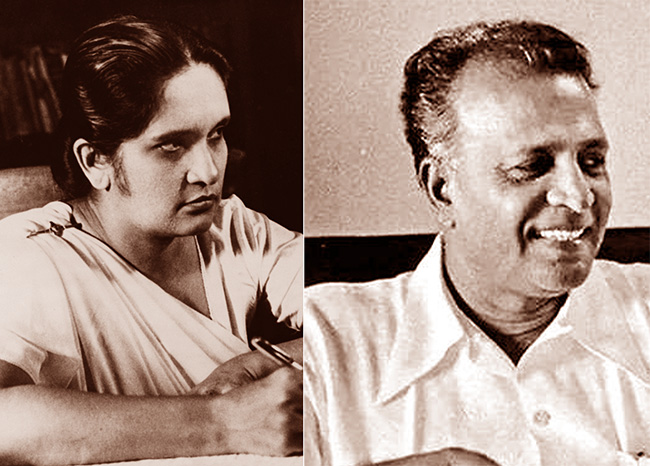
By Uditha Devapriya
On June 7, 1964, the Central Committee of the Lanka Sama Samaja Party convened a special conference at which three resolutions were presented. The first, moved by N. M. Perera, called for a coalition with the SLFP, inclusive of any ministerial portfolios. The second, led by the likes of Colvin R. de Silva, Leslie Goonewardena, and Bernard Soysa, advocated a line of critical support for the SLFP, but without entering into a coalition. The third, supported by the likes of Edmund Samarakkody and Bala Tampoe, rejected any form of compromise with the SLFP and argued that the LSSP should remain an independent party.
The conference was held a year after three parties – the LSSP, the Communist Party, and Philip Gunawardena’s Mahajana Eksath Peramuna – had founded a United Left Front. The ULF’s formation came in the wake of a spate of strikes against the Sirimavo Bandaranaike government. The previous year, the Ceylon Transport Board had waged a 17-day strike, and the harbour unions a 60-day strike. In 1963 a group of working-class organisations, calling itself the Joint Committee of Trade Unions, began mobilising itself. It soon came up with a common programme, and presented a list of 21 radical demands.
In response to these demands, Bandaranaike eventually supported a coalition arrangement with the left. In this she was opposed, not merely by the right-wing of her party, led by C. P. de Silva, but also those in left parties opposed to such an agreement, including Bala Tampoe and Edmund Samarakkody. Until then these parties had never seen the SLFP as a force to reckon with: Leslie Goonewardena, for instance, had characterised it as “a Centre Party with a programme of moderate reforms”, while Colvin R. de Silva had described it as “capitalist”, no different to the UNP and by default as bourgeois as the latter.
The LSSP’s decision to partner with the government had a great deal to do with its changing opinions about the SLFP. This, in turn, was influenced by developments abroad. In 1944, the Fourth International, which the LSSP had affiliated itself with in 1940 following its split with the Stalinist faction, appointed Michel Pablo as its International Secretary. After the end of the war, Pablo oversaw a shift in the Fourth International’s attitude to the Soviet states in Eastern Europe. More controversially, he began advocating a strategy of cooperation with mass organisations, regardless of their working-class or radical credentials.
Pablo argued that from an objective perspective, tensions between the US and the Soviet Union would lead to a “global civil war”, in which the Soviet Union would serve as a midwife for world socialist revolution. In such a situation the Fourth International would have to take sides. Here he advocated a strategy of entryism vis-à-vis Stalinist parties: since the conflict was between Stalinist and capitalist regimes, he reasoned, it made sense to see the former as allies. Such a strategy would, in his opinion, lead to “integration” into a mass movement, enabling the latter to rise to the level of a revolutionary movement.

Though controversial, Pablo’s line is best seen in the context of his times. The resurgence of capitalism after the war, and the boom in commodity prices, had a profound impact on the course of socialist politics in the Third World. The stunted nature of the bourgeoisie in these societies had forced left parties to look for alternatives. For a while, Trotsky had been their guide: in colonial and semi-colonial societies, he had noted, only the working class could be expected to see through a revolution. This entailed the establishment of workers’ states, but only those arising from a proletarian revolution: a proposition which, logically, excluded any compromise with non-radical “alternatives” to the bourgeoisie.
To be sure, the Pabloites did not waver in their support for workers’ states. However, they questioned whether such states could arise only from a proletarian revolution. For obvious reasons, their reasoning had great relevance for Trotskyite parties in the Third World. The LSSP’s response to them showed this well: while rejecting any alliance with Stalinist parties, the LSSP sympathised with the Pabloites’ advocacy of entryism, which involved a strategic orientation towards “reformist politics.” For the world’s oldest Trotskyite party, then going through a series of convulsions, ruptures, and splits, the prospect of entering the reformist path without abandoning its radical roots proved to be welcoming.
Writing in the left-wing journal Community in 1962, Hector Abhayavardhana noted some of the key concerns that the party had tried to resolve upon its formation. Abhayavardhana traced the LSSP’s origins to three developments: international communism, the freedom struggle in India, and local imperatives. The latter had dictated the LSSP’s manifesto in 1936, which included such demands as free school books and the use of Sinhala and Tamil in the law courts. Abhayavardhana suggested, correctly, that once these imperatives changed, so would the party’s focus, though within a revolutionary framework. These changes would be contingent on two important factors: the establishment of universal franchise in 1931, and the transfer of power to the local bourgeoisie in 1948.
Paradoxical as it may seem, the LSSP had entered the arena of radical politics through the ballot box. While leading the struggle outside parliament, it waged a struggle inside it also. This dual strategy collapsed when the colonial government proscribed the party and the D. S. Senanayake government disenfranchised plantation Tamils. Suffering two defeats in a row, the LSSP was forced to think of alternatives. That meant rethinking categories such as class, and grounding them in the concrete realities of the country.
This was more or less informed by the irrelevance of classical and orthodox Marxian analysis to the situation in Sri Lanka, specifically to its rural society: with a “vast amorphous mass of village inhabitants”, Abhayavardhana observed, there was no real basis in the country for a struggle “between rich owners and the rural poor.” To complicate matters further, reforms like the franchise and free education, which had aimed at the emancipation of the poor, had in fact driven them away from “revolutionary inclinations.” The result was the flowering of a powerful rural middle-class, which the LSSP, to its discomfort, found it could not mobilise as much as it had the urban workers and plantation Tamils.
Where else could the left turn to? The obvious answer was the rural peasantry. But the rural peasantry was in itself incapable of revolution, as Hector Abhayavardhana has noted only too clearly. While opposing the UNP’s Westernised veneer, it did not necessarily oppose the UNP’s overtures to Sinhalese nationalism. As historians like K. M. de Silva have observed, the leaders of the UNP did not see their Westernised ethos as an impediment to obtaining support from the rural masses. That, in part at least, was what motivated the Senanayake government to deprive Indian estate workers of their most fundamental rights, despite the existence of pro-minority legal safeguards in the Soulbury Constitution.
To say this is not to overlook the unique character of the Sri Lankan rural peasantry and petty bourgeoisie. Orthodox Marxists, not unjustifiably, characterise the latter as socially and politically conservative, tilting more often than not to the right. In Sri Lanka, this has frequently been the case: they voted for the UNP in 1948 and 1952, and voted en masse against the SLFP in 1977. Yet during these years they also tilted to the left, if not the centre-left: it was the petty bourgeoisie, after all, which rallied around the SLFP, and supported its more important reforms, such as the nationalisation of transport services.
One must, of course, be wary of pasting the radical tag on these measures and the classes that ostensibly stood for them. But if the Trotskyite critique of the bourgeoisie – that they were incapable of reform, even less revolution – holds valid, which it does, then the left in the former colonies of the Third World had no alternative but to look elsewhere and to be, as Abhayavardhana noted, “practical men” with regard to electoral politics. The limits within which they had to work in Sri Lanka meant that, in the face of changing dynamics, especially among the country’s middle-classes, they had to change their tactics too.
Meanwhile, in 1953, the Trotskyite critique of Pabloism culminated with the publication of an Open Letter by James Cannon, of the US Socialist Workers’ Party. Cannon criticised the Pabloite line, arguing that it advocated a policy of “complete submission.” The publication of the letter led to the withdrawal of the International Committee of the Fourth International from the International Secretariat. The latter, led by Pablo, continued to influence socialist parties in the Third World, advocating temporary alliances with petty bourgeois and centrist formations in the guise of opposing capitalist governments.
For the LSSP, this was a much-needed opening. Even as late as 1954, three years after S. W. R. D. Bandaranaike formed the SLFP, the LSSP continued to characterise the latter as the alternative bourgeois party in Ceylon. Yet this did not deter it from striking up no contest pacts with Bandaranaike at the 1956 election, a strategy that went back to November 1951, when the party requested the SLFP to hold a discussion about the possibility of eliminating contests in the following year’s elections. Though it extended critical support to the MEP government in 1956, the LSSP opposed the latter once it enacted emergency measures in 1957, mobilising trade union action for a period of three years.
At the 1960 election the LSSP contested separately, with the slogan “N. M. for P.M.” Though Sinhala nationalism no longer held sway as it had in 1956, the LSSP found itself reduced to a paltry 10 seats. It was against this backdrop that it began rethinking its strategy vis-à-vis the ruling party. At the throne speech in April 1960, Perera openly declared that his party would not stabilise the SLFP. But a month later, in May, he called a special conference, where he moved a resolution for a coalition with the party. As T. Perera has noted in his biography of Edmund Samarakkody, the response to the resolution unearthed two tendencies within the oppositionist camp: the “hardliners” who opposed any compromise with the SLFP, including Samarakkody, and the “waverers”, including Leslie Goonewardena.
These tendencies expressed themselves more clearly at the 1964 conference. While the first resolution by Perera called for a complete coalition, inclusive of Ministries, and the second rejected a coalition while extending critical support, the third rejected both tactics. The outcome of the conference showed which way these tendencies had blown since they first manifested four years earlier: Perera’s resolution obtained more than 500 votes, the second 75 votes, the third 25. What the anti-coalitionists saw as the “Great Betrayal” of the LSSP began here: in a volte-face from its earlier position, the LSSP now held the SLFP as a party of a radical petty bourgeoisie, capable of reform.
History has not been kind to the LSSP’s decision. From 1970 to 1977, a period of less than a decade, these strategies enabled it, as well as the Communist Party, to obtain a number of Ministries, as partners of a petty bourgeois establishment. This arrangement collapsed the moment the SLFP turned to the right and expelled the left from its ranks in 1975, in a move which culminated with the SLFP’s own dissolution two years later.
As the likes of Samarakkody and Meryl Fernando have noted, the SLFP needed the LSSP and Communist Party, rather than the other way around. In the face of mass protests and strikes in 1962, the SLFP had been on the verge of complete collapse. The anti-coalitionists in the LSSP, having established themselves as the LSSP-R, contended later on that the LSSP could have made use of this opportunity to topple the government.
Whether or not the LSSP could have done this, one can’t really tell. However, regardless of what the LSSP chose to do, it must be pointed out that these decades saw the formation of several regimes in the Third World which posed as alternatives to Stalinism and capitalism. Moreover, the LSSP’s decision enabled it to see through certain important reforms. These included Workers’ Councils. Critics of these measures can point out, as they have, that they could have been implemented by any other regime. But they weren’t. And therein lies the rub: for all its failings, and for a brief period at least, the LSSP-CP-SLFP coalition which won elections in 1970 saw through something of a revolution in the country.
The writer is an international relations analyst, researcher, and columnist based in Sri Lanka who can be reached at udakdev1@gmail.com
-

 Business6 days ago
Business6 days agoStandard Chartered appoints Harini Jayaweera as Chief Compliance Officer
-
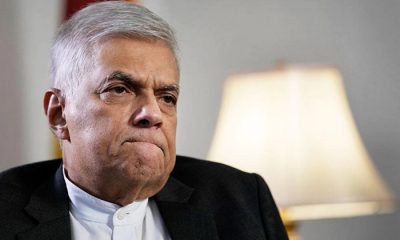
 News7 days ago
News7 days agoWickremesinghe defends former presidents’ privileges
-
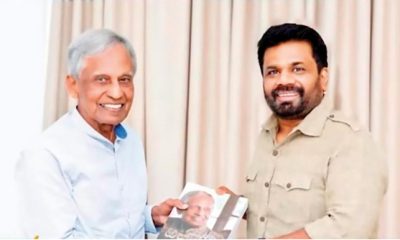
 Opinion7 days ago
Opinion7 days agoDevolution and Comrade Anura
-

 News5 days ago
News5 days agoFifteen heads of Sri Lanka missions overseas urgently recalled
-

 News5 days ago
News5 days agoFive-star hotels stop serving pork products
-
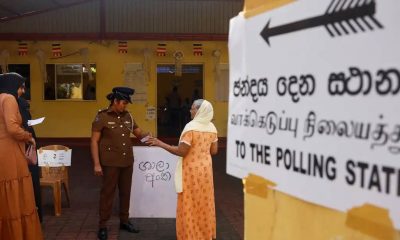
 Features5 days ago
Features5 days agoWaiting for a Democratic Opposition
-
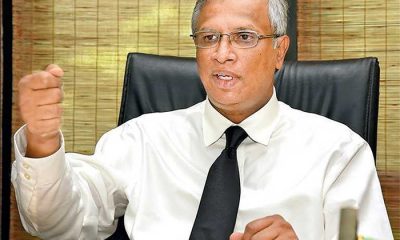
 News4 days ago
News4 days agoITAK denies secret pact with NPP
-

 Sports7 days ago
Sports7 days agoChamika, Anuka shine as Mahanama beat Nalanda











